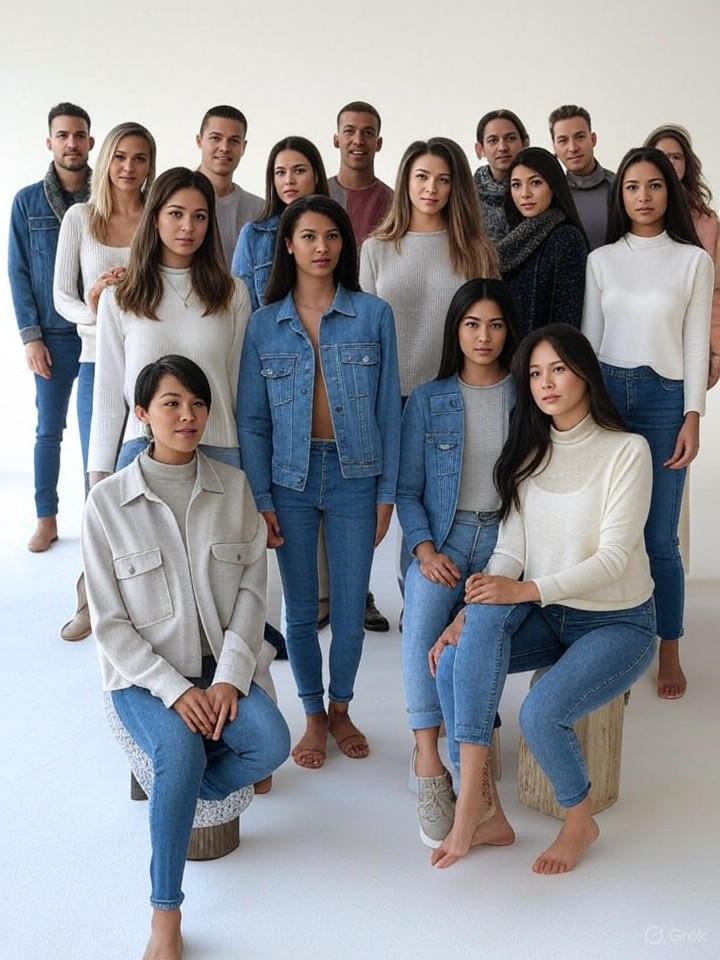
The Fastest Way to Refresh PDPs Across 100+ SKUs (Without a Studio)
October 9, 2025 • OnModel Media Team
Keeping a large catalog fresh is hard. New colorways drop, retailers change specs, and your team is still waiting on studio days that keep slipping. The result: out-of-date PDPs, inconsistent styling, and missed revenue.
OnModel Media replaces long studio lead times with an AI pipeline that turns a single packshot or product image into ready-to-publish on-model photos and motion clips—fast enough to keep up with real-world merchandising and marketplace demands.
Who this guide is for
Mid-market fashion and accessories brands (50–500 employees) juggling ecommerce and retail channels who need governance, consistency, and speed across big catalogs.
The mid-market catalog problem (and why governance matters)
Running 100+ SKUs across seasons and regions means:
- Spec churn across retailers (backgrounds, crops, angles, file naming).
- Inconsistent styling when vendor assets vary in lighting, pose, and fit cues.
- Throughput crunches when studio calendars collide with launch timelines.
A governance-first approach fixes this at the source:
- Templates mapped to each channel/retailer (Amazon, Target, Nordstrom, Zalando, etc.).
- Consistent persona/pose libraries by category and region (e.g., EU vs. LATAM).
- Audit trail & approvals so merchandising, brand, and legal can sign off quickly.
TL;DR: Treat imagery like a product. Version it, template it, and ship it on a schedule.
A scalable flow: from one packshot to a governed PDP library
Here’s how teams refresh 100+ PDPs in days—not months:
-
Ingest & normalize
Upload 1+ product photos (flat lay, mannequin, or on-figure). Attach style notes (fit, drape, vibe) and retailer destinations. -
Select persona / pose sets at scale
Choose standardized model personas (age, ethnicity, body type) and pose/angle packs aligned to your category (tops vs. denim vs. footwear). This ensures fit cues (inseam, waist, drape) are visible the same way across the catalog. -
Apply retailer spec templates
Prebuilt outputs handle background, crop/ratio, naming conventions, and sequence order (primary vs. alts) per channel. This reduces rejections and resubmissions. -
Bulk generation & QA
Generate on-model images and short motion clips in minutes. Automatic checks flag outliers for quick human review; approved assets ship to DAM/PIM (e.g., Salsify/Akeneo/Shopify). -
Push & monitor
Publish to PDPs, feeds, and retailer portals; track disapprovals and rapidly regenerate compliant variants where needed.
What “good” looks like for 100+ SKU refreshes
- Consistency by design: Lighting, framing, and pose libraries are standardized to reduce cognitive load for shoppers and buyers.
- Inclusive, size-accurate visuals: Use persona mixes and repeatable posing to clarify fit across sizes—this supports conversion and can reduce returns tied to fit ambiguity.
- Retailer-ready on first pass: Templates for white-background primaries and lifestyle alts that pass common retailer rules.
- Fast SLAs, clear audit: Same-day asset packs with an approval trail that brand, legal, and retail partners can trust.
When to use AI vs. live shoots
Use AI generation when:
- You’re standardizing large portions of a catalog (colorways, extended sizes).
- You need localized persona mixes for multiple regions—at speed.
- Retailer specs change late, and you must regenerate sequences without new shoots.
Keep live shoots for:
- Hero campaigns with bespoke art direction or complex sets.
- Materials or details that require extreme macro or specialized lighting rigs.
Most mid-market teams blend both: live shoots for a few flagship styles and AI for the long tail that would otherwise delay launches or blow budgets.
Compliance, privacy, and brand safety (in brief)
OnModel Media operates with brand-safe defaults, content history, and export logs. Inputs are secured and not reused for other customers, supporting enterprise governance and approvals across legal and regional stakeholders.
Sample roll-out plan for a 300-SKU refresh
Week 0 – Prep
- Map retailers/channels and choose spec templates.
- Approve 2–3 persona/pose libraries per category.
Week 1 – Pilot
- Run 20 SKUs end-to-end (tops + bottoms).
- QA for fit cues, cropping, sequence order, and naming.
Week 2 – Scale
- Bulk generate remaining SKUs with nightly QA windows.
- Push to PIM/DAM and then to PDPs/retailers.
Ongoing
- Regenerate variants for seasonal updates, colorways, and retailer spec changes in hours, not weeks.
FAQs
Will the outputs look like “mockups”?
No—our pipeline is optimized for photoreal on-model context with angle and pose control, built to meet ecommerce clarity standards rather than generic mockup aesthetics.
Can we cover size-inclusive ranges consistently?
Yes. Define persona mixes and repeatable posing by size; this improves fit communication across the grid and helps lower returns.
How fast can we turn around a full refresh?
Teams routinely produce same-day asset packs for new SKUs and promos; full catalog passes run as fast as organizational QA can approve.
What about publishing and versioning?
Map outputs to your PIM/DAM (e.g., Salsify/Akeneo/Shopify) with clear naming and version control for painless rollbacks and retailer-specific variations.
Get your 24-hour quote (Managed)
If you’re running 100+ SKUs, the fastest path is a governed, templated rollout:
- See mid-market case patterns and spec templates.
- Get a tailored plan with SLAs and QA.
Next step: Request a quote and we’ll scope your catalog, templates, and timeline in 24 hours. Prefer to try it hands-on first? Spin up a few SKUs in the Studio to validate fit cues and persona sets.
OnModel Media—AI-powered product photos & motion on real-looking models in under a minute, built for ecommerce scale.